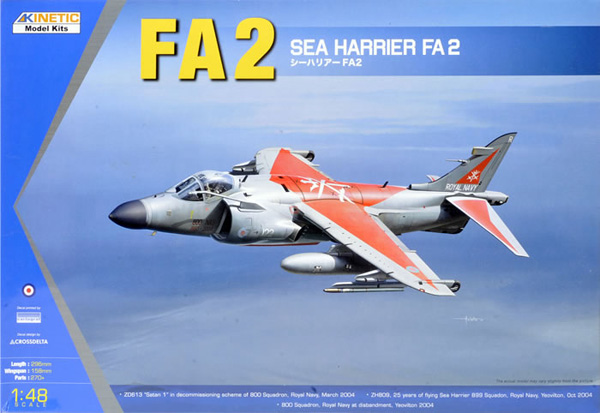
Feature Article with Chris McDowell
A note from Geoff C…
Who doesn’t like a Sea Harrier? I mean, just take a look at the superb result Chris has achieved with the Kinetic kit and minimal accessories – superb!

Over to you Chris for the full story…
The British Aerospace Sea Harrier was a naval short take-off and vertical landing and take-off jet fighter, reconnaissance and attack aircraft; the second member of the Harrier Jump Jet family developed. It first entered service with the Royal Navy in April 1980 as the Sea Harrier FRS1 and became informally known as the “Shar”. Unusual in an era in which most naval and land-based air superiority fighters were large and supersonic, the principal role of the subsonic Sea Harrier was to provide air defence of Royal Navy aircraft carriers.
The Sea Harrier served in the Falklands War, and the Balkans conflicts; on all occasions it mainly operated from aircraft carriers positioned within the conflict zone. Its usage in the Falklands War was its most high profile and important success, where it was the only fixed-wing fighter available to protect the British Task Force. The Sea Harriers shot down 20 enemy aircraft during the conflict with one lost to enemy ground fire. They were also used to launch ground attacks in the same manner as the Harriers operated by the Royal Air Force.
The Sea Harrier was marketed for sales abroad, but by 1983 India was the only operator other than Britain after sales to Argentina and Australia were unsuccessful. A second, updated version for the Royal Navy was made in 1993 as the Sea Harrier FA2, improving its air-to-air abilities and weapons compatibilities, along with a more powerful engine; this version continued manufacture until 1998. The aircraft was withdrawn from service early by the Royal Navy in 2006. The Sea Harrier remained in service for another decade with the Indian Navy until its retirement in 2016 thus ending the career of this historic British jet. (Source: Wikipedia)
The Kinetic kit
Kinetic first released their FA2 version of the Sea Harrier in 2015, and is only the second version of this iconic aircraft available in 1:48 scale. The other being the old Airfix release from 1997, which in itself was based on the original moulds of the FRS.1 which dates back to the mid 80’s. So I think it’s fairly safe to say that an updated mould was sorely needed.
The Kinetic kit is made up of 243 parts in a light grey plastic (104 parts are dedicated to ordinance), 16 parts in clear, a small photo-etch fret and a fairly comprehensive decal sheet consisting of markings for 28 different aircraft. The beautifully printed decal sheet by Cartograf consists of two commemorative schemes plus 26 aircraft depicted at disbandment in 2004 and 2006. The moulding quality straight from the box looks great, and the surface detail is very good. Unfortunately the details are not quite as crisp though as you might expect from an Eduard, Hasegawa or a Tamiya release.
The breakdown of the parts is fairly straightforward, although if my previous experiences with earlier Kinetic releases are anything to go by, I still expect to have my sanders, fillers and scribers permanently on my bench within easy reach for the majority of this project.